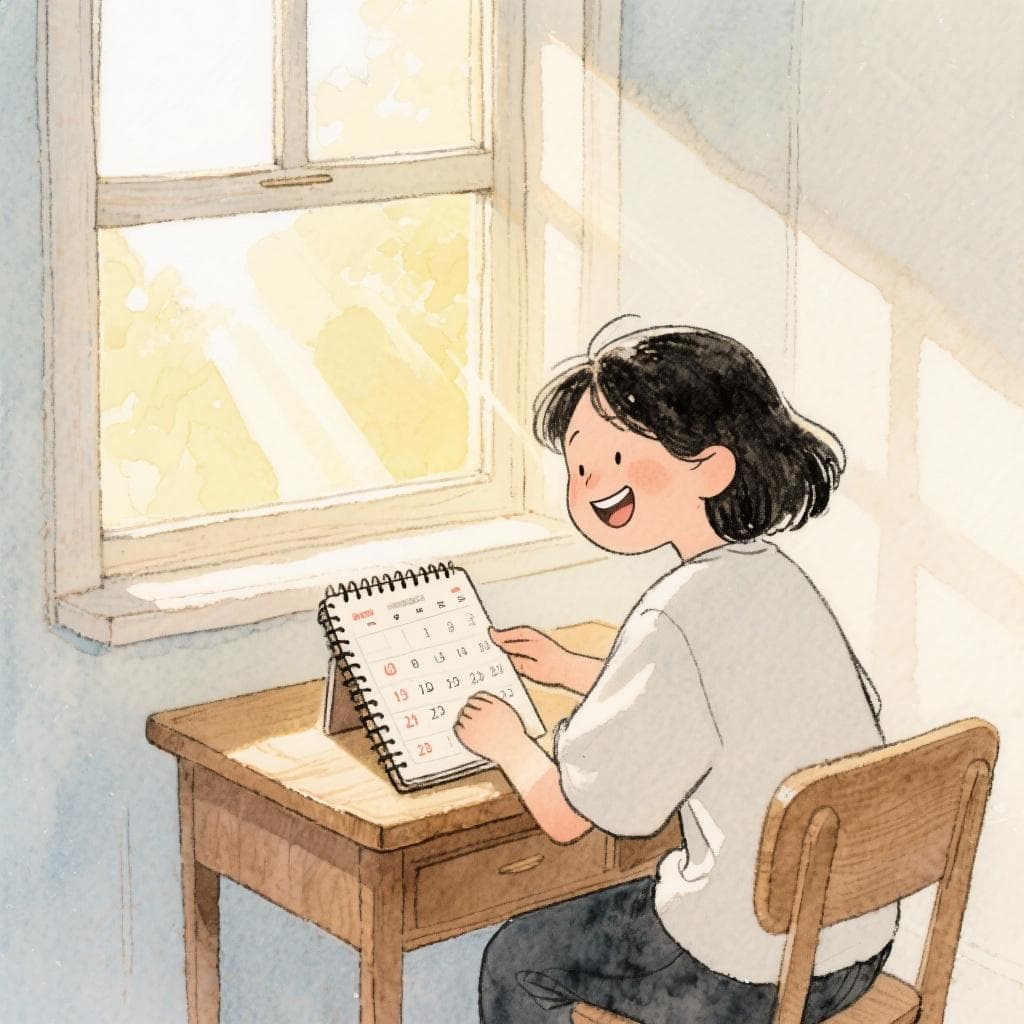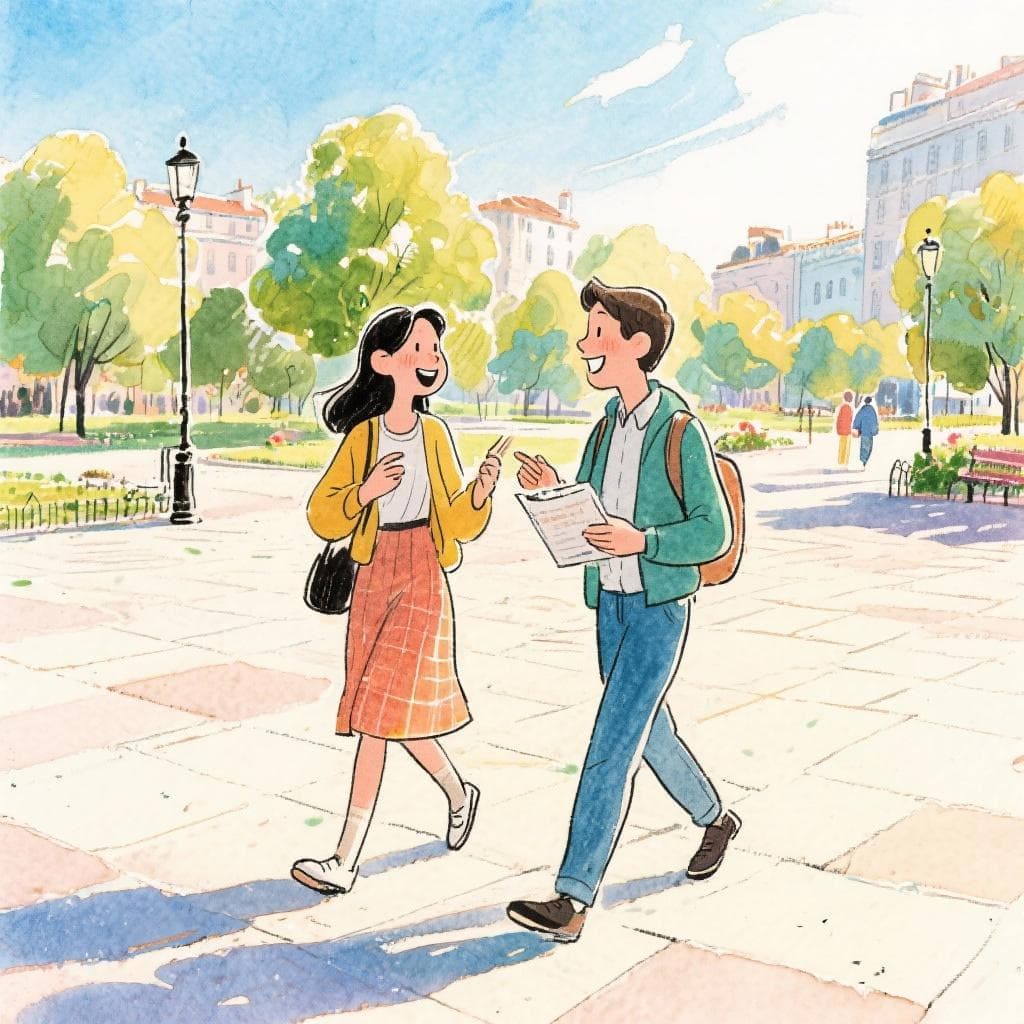Table of Contents
The Spanish Informal Future: Your Guide to "Ir + a + Infinitive"
What are you going to do this weekend? Are you going to watch a movie? Or maybe you're going to meet up with friends?
In English, we use "going to" all the time to talk about our future plans. And guess what? Spanish has a super similar, incredibly useful, and easy-to-learn structure to do the exact same thing!
Welcome to the Spanish informal future, also known as "ir + a + infinitive". This is your go-to tool for talking about what's coming up next, from your plans for this evening to your dreams for next year. It's one of the most common ways native speakers talk about the future, so learning it will make your Spanish sound natural and fluent.
Ready? Let's dive in!

The Magic Formula: Breaking It Down
The best part about this "tense" is that it's not really a new tense you have to memorize. It's more like a recipe with three simple ingredients. Once you know the recipe, you can talk about the future with confidence.
The Future Formula
The structure is always the same: [Conjugated ir] + a + [Infinitive Verb]
Let's look at each ingredient.
Ingredient 1: The Verb ir (to go)
The first step is to take the verb ir (to go) and conjugate it in the present tense. This is the only part of the formula that changes. It needs to match who you're talking about (I, you, he, she, etc.).
If you're not familiar with the present tense of ir, don't worry! It's irregular, but there are only six forms to learn.
| Pronoun | ir Conjugation | Meaning |
|---|---|---|
| yo | voy | I go |
| tú | vas | you (informal) go |
| él / ella / usted | va | he / she / you (formal) go |
| nosotros / nosotras | vamos | we go |
| vosotros / vosotras | vais | you all (informal, Spain) go |
| ellos / ellas / ustedes | van | they / you all go |
This is the engine of our future-tense machine!
Ingredient 2: The Preposition a
This is the easiest part. The second ingredient is always, always, always the word a. It acts like a little bridge connecting ir to the action you're going to do. It never changes. Simple, right?
Ingredient 3: The Infinitive Verb
The final ingredient is the main action verb in its original, untouched form. This is called the infinitive. Infinitives in Spanish are the verbs you find in the dictionary—they always end in -ar, -er, or -ir.
- Hablar (to speak)
- Comer (to eat)
- Vivir (to live)
You don't need to conjugate this verb. Just drop it in at the end. That's what makes this structure so easy!
Putting It All Together: Examples in Action
Let's combine our ingredients and see how this works in real sentences.
Yo voy a... (I am going to...)
- Yo voy a estudiarto study español. (I am going to study Spanish.)
- Voy a llamarto call a mi madre más tarde. (I'm going to call my mom later.)
Tú vas a... (You are going to...)
- ¿Tú vas a verto see la película esta noche? (Are you going to see the movie tonight?)
- Vas a necesitarto need un abrigo. (You are going to need a coat.)
Él/Ella/Usted va a... (He/She/You (formal) is going to...)
- Ella va a cocinarto cook pasta para la cena. (She is going to cook pasta for dinner.)
- El tren va a llegarto arrive pronto. (The train is going to arrive soon.)
Nosotros/Nosotras vamos a... (We are going to...)
- Nosotros vamos a viajarto travel a México el próximo verano. (We are going to travel to Mexico next summer.)
- Vamos a caminarto walk por el parque. (We are going to walk through the park.)
Ellos/Ellas/Ustedes van a... (They/You all are going to...)
- Ellos van a comprarto buy un coche nuevo. (They are going to buy a new car.)
- ¿Ustedes van a venirto come a la fiesta? (Are you all going to come to the party?)
See the pattern? The first verb (ir) changes, but a and the infinitive stay the same.

Let's Practice!
Time to test your knowledge. Try this quick quiz!
Complete the sentence: Mis amigos y yo ___ a jugar al fútbol.
Great job! Now, let's try unscrambling a sentence. Put the words in the correct order.
Arrange the words to form a correct sentence:
Making it Negative: How to Say "Not Going To"
What if your plans change? Saying you're not going to do something is incredibly simple. You just add one little word: no.
Place no directly before the conjugated form of ir.
Formula: No + [conjugated ir] + a + [infinitive]
Let's see it side-by-side.
Drag the handle to compare
More Examples of Negative Sentences:
- Ella no va a comer carne. (She is not going to eat meat.)
- Nosotros no vamos a llegar tarde. (We are not going to arrive late.)
- Ustedes no van a entender si no escuchan. (You all are not going to understand if you don't listen.)
It's that easy! Just put no in front.
Asking Questions About the Future
Want to ask someone about their plans? You have two main options, and both are straightforward.
1. Yes/No Questions
To ask a simple yes/no question, you can often just change your intonation. Your voice goes up at the end of the sentence. In writing, you'll see the classic Spanish upside-down question mark (¿) at the beginning.
- Affirmative: Vas a la fiesta. (You are going to the party.)
- Question: ¿Vas a la fiesta? (Are you going to the party?)
You can also invert the subject and verb, but it's not always necessary in conversation.
- ¿Va a llover mañana? (Is it going to rain tomorrow?)
- ¿Van ustedes a ayudarnos? (Are you all going to help us?)
2. Information Questions
If you want more than a "yes" or "no," start your question with a question word like Qué (What), Dónde (Where), Cuándo (When), or Por qué (Why).
- ¿Qué vas a hacer este fin de semana? (What are you going to do this weekend?)
- ¿Dónde van a cenar? (Where are they going to have dinner?)
- ¿Cuándo va a empezar la película? (When is the movie going to start?)
Informal Future vs. Simple Future: What's the Difference?
You might have heard of another future tense in Spanish, the "simple future" (e.g., hablaré, comerás). So, what's the deal? When do you use ir + a + infinitive?

Think of it this way:
Ir + a + infinitive is for:
- Certain Plans & Intentions: Things you have already decided to do. It expresses a high degree of certainty.
- Mañana voy a visitar a mi abuela. (Tomorrow I'm going to visit my grandma. - It's a firm plan.)
- Near Future & Predictions Based on Evidence: Events that are about to happen or that you can see coming.
- ¡Mira las nubes! Va a llover. (Look at the clouds! It's going to rain. - The evidence is right there.)
The Simple Future (-é, -ás, -á...) is for:
- Predictions or Hypotheses: Things you think might happen, but aren't certain.
- En el futuro, los coches volarán. (In the future, cars will fly. - A general prediction.)
- Spontaneous Decisions & Promises:
- ¿Alguien puede ayudar? - ¡Yo te ayudaré! (Can someone help? - I'll help you!)
Rule of Thumb
When in doubt, use ir + a + infinitive! It's much more common in everyday conversation, especially in Latin America. Think of it as your reliable, all-purpose future tense for plans and intentions.
Common Mistakes to Avoid
This structure is simple, but there are a couple of common traps for learners. Let's make sure you don't fall into them!
1. Forgetting the a
This is the number one mistake! It's easy to forget that little bridge word, but the sentence doesn't work without it.
Drag the handle to compare
2. Conjugating the Second Verb
Remember, only ir gets conjugated. The second verb, the main action, must stay in its infinitive form (-ar, -er, -ir).
Drag the handle to compare
You're Ready for the Future!
¡Felicidades! You've just learned one of the most practical and frequently used structures in the entire Spanish language.
By mastering the simple formula of ir + a + infinitive, you've unlocked the ability to talk about your plans, ask about others' intentions, and describe what's just around the corner.
So, what are you going to do now? ¿Vas a practicar tu español? We hope so! Keep practicing, and you'll be discussing your future plans like a native speaker in no time.